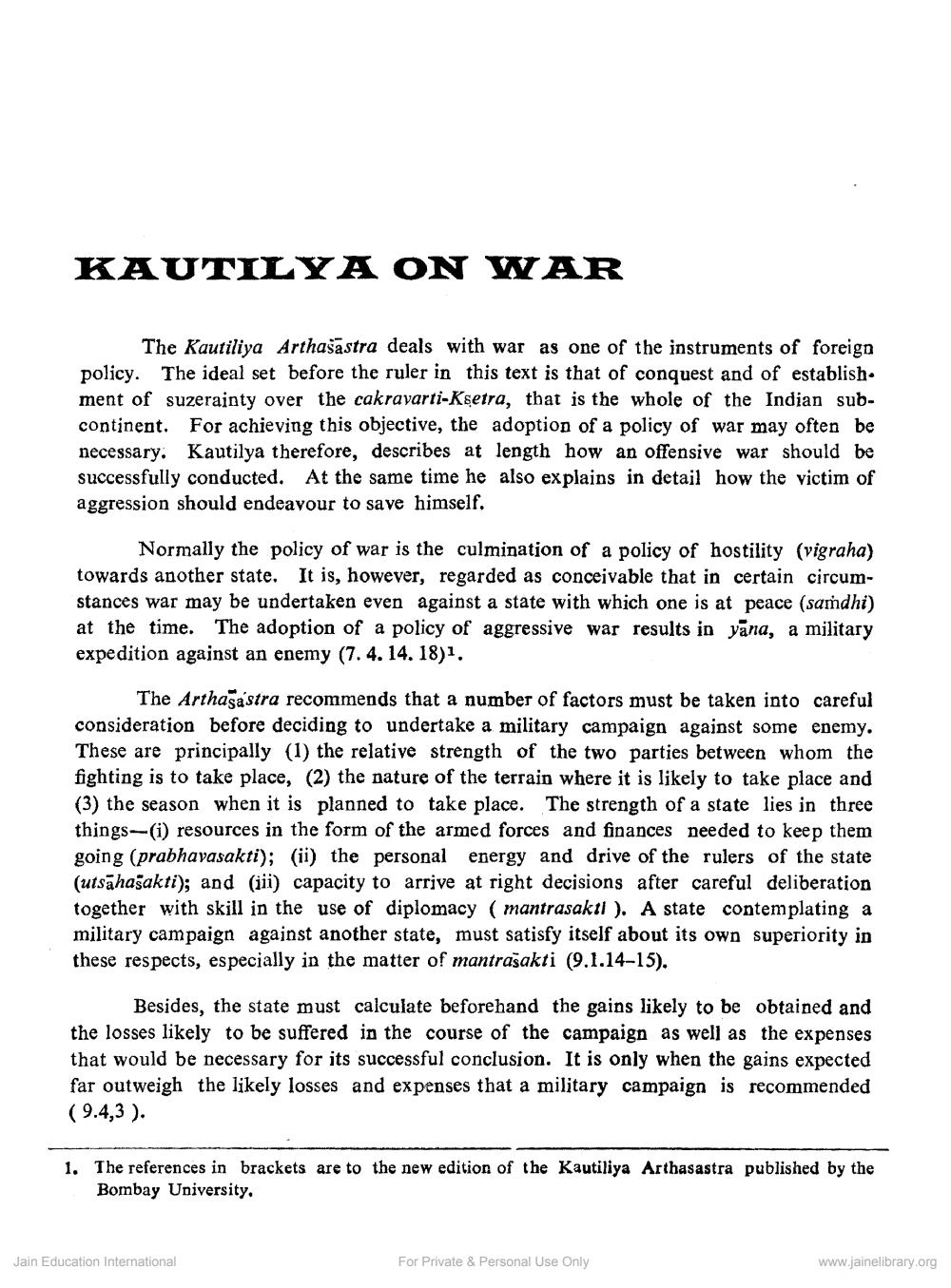Book Title: Kautilya on war Author(s): R P Kangle Publisher: Z_Jinvijay_Muni_Abhinandan_Granth_012033.pdf View full book textPage 1
________________ KAUTILYA ON WAR The Kautiliya Arthasāstra deals with war as one of the instruments of foreign policy. The ideal set before the ruler in this text is that of conquest and of establish. ment of suzerainty over the cakravarti-Ksetra, that is the whole of the Indian subcontinent. For achieving this objective, the adoption of a policy of war may often be necessary. Kautilya therefore, describes at length how an offensive war should be successfully conducted. At the same time he also explains in detail how the victim of aggression should endeavour to save himself. Normally the policy of war is the culmination of a policy of hostility (vigraha) towards another state. It is, however, regarded as conceivable that in certain circumstances war may be undertaken even against a state with which one is at peace (samdhi) at the time. The adoption of a policy of aggressive war results in yāna, a military expedition against an enemy (7.4. 14. 18). The Arthasastra recommends that a number of factors must be taken into careful consideration before deciding to undertake a military campaign against some enemy. These are principally (1) the relative strength of the two parties between whom the fighting is to take place, (2) the nature of the terrain where it is likely to take place and (3) the season when it is planned to take place. The strength of a state lies in three things-(i) resources in the form of the armed forces and finances needed to keep them going (prabhavasakti); (ii) the personal energy and drive of the rulers of the state (utsahasakti); and (ii) capacity to arrive at right decisions after careful deliberation together with skill in the use of diplomacy ( mantrasaktl). A state contemplating a military campaign against another state, must satisfy itself about its own superiority in these respects, especially in the matter of mantrašakti (9.1.14-15). Besides, the state must calculate beforehand the gains likely to be obtained and the losses likely to be suffered in the course of the campaign as well as the expenses that would be necessary for its successful conclusion. It is only when the gains expected far outweigh the likely losses and expenses that a military campaign is recommended (9.4,3 ). 1. The references in brackets are to the new edition of the Kautiliya Arthasastra published by the Bombay University, Jain Education International For Private & Personal Use Only www.jainelibrary.orgPage Navigation
1 2 3 4 5 6 7 8
